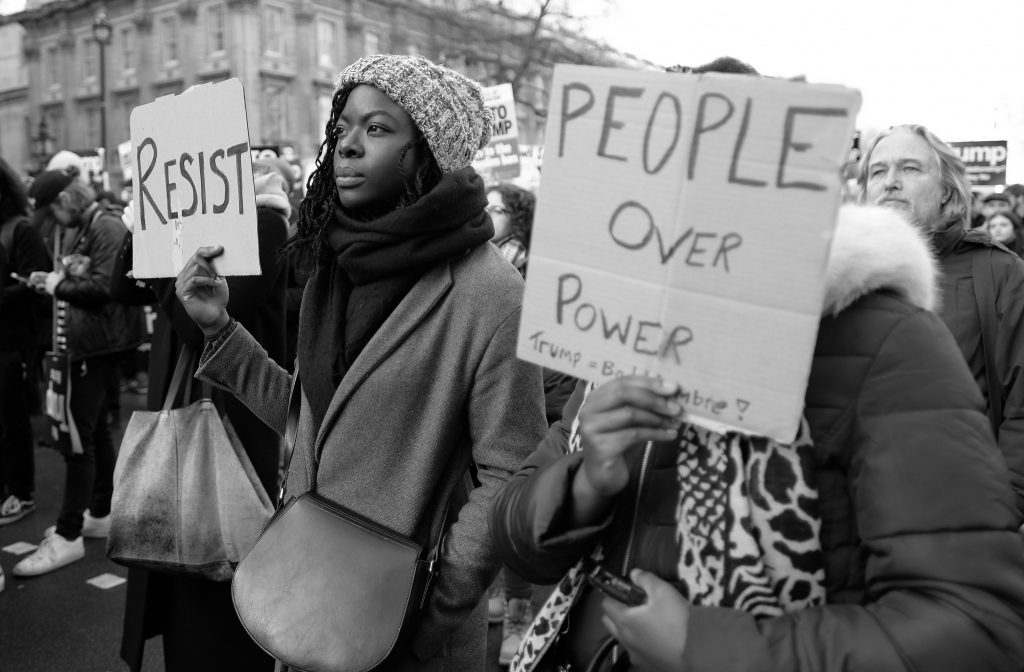PACS Blog/December 13, 2020
Learning From the Present
We need to keep investing in each other

November 17, 2020 Correction: The data cited in this article were preliminary. Notably, data on turnout and support from the Navajo nation, from a November 6 report, have been significantly adjusted downward to account for the dispersion of Navajo citizens in rural and urban areas, the number of Whites living in precincts that include Navajo lands, and for other reasons. More information can be found here. I regret the error.
How do we make sense of the election? Part of the answer to that question depends on whose stories (and what data) you focus on. A Twitter thread from Dr. Rhea Boyd helped me realize why the mainstream news story about a close race seemed incomplete to me. I dug into the data on voters and looked only at results from Black, Indigenous, and voters of color. When I did so, the story of a close election disappeared. AP Votecast data shows that 90% of Black voters, 63% of Latino voters, 70% of Asian American voters, and 97% of Navajo Nation voters (who helped flip Arizona) voted for the Democratic ticket. Those percentages tell the story of a landslide.
Pundits and scholars have been saying for months that the top issues for voters were the pandemic, the economy, racial justice, climate change, and the future of democracy. So I looked at more data on the communities noted above. According to the Covid Racial Data Tracker and the Mayo Clinic, Black, Indigenous, and Latinx people are experiencing significantly higher COVID infection and death rates. These communities are also being hit hardest by economic losses. In October 2020, the unemployment rates were 10.8% for Black Americans, 8.7% for Latinos and Hispanics, and 7.6% for Asian Americans. As of June, 12.4% of Indigenous people were unemployed. If the pandemic and the economy are what mattered on November 3, 2020 – the people have spoken. Of course, these voters represent the communities who’ve been leading the fights for racial justice, environmental protections, voting rights, and the rule of law for centuries.
When I put these data at the center of my reflections, a clear statement of preference emerges from Americans whose demographic identity matches that of the global majority of people. It’s not the entire story of the election, by any means, but it might offer some insights for thinking about philanthropy and what comes next.
What might philanthropy be learning from this?
For foundations and philanthropy, there have been some signs of change over these last months. When it came to organizing around racial justice and getting out the vote, foundations of all sizes demonstrated the ability to come together and make big operating grants to Black-led organizations, much of it led by Black women like Nse Ufot, LaTosha Brown, and Stacy Abrams for organizing and community building. Donors showed they could move billions of dollars fast to respond to the call for COVID relief and racial equity/reckoning. If electoral turnout and victory are the measures of success, these strategies worked, not because of the investment from philanthropy, but surely supported by it.
For foundations and individual high-capacity donors the key lesson to learn about big, general operating support for organizing over time is simple: don’t stop. The election is over but not a single one of the problems these movements aim to change has been fixed. Domestic terrorism by White nationalists is still atop the national security threat list. COVID is infecting more people per day than ever before (and more in the U.S. than anywhere else). The economic damage – with winter coming, evictions looming, and final efforts to take health insurance from people – will get worse. The structural damage done to the federal governing apparatus is real (and much more may be done over the next 10 weeks). Faith in government has been pushed to new lows. The political path ahead is still unclear.
Another key lesson for institutional philanthropy should be a recognition of just how much its impact depends on the actions of local small donors and committed volunteers. As Danielle Allen of Harvard notes, “one silver lining of the last four years…Best civic education the country has had in decades….” Long-term support for grassroots community organizing and organizations builds the infrastructure for everything else that needs to change. If, with the electoral spotlight gone, philanthropy turns away from supporting leaders and organizations who do the hard work of organizing communities and doing deep canvassing, we’ll fall backwards. These communities and these leaders need reliable, flexible philanthropic support to make change; this is as true for addressing structural inequities as it is for getting out the vote.
Philanthropy shouldn’t stop listening to and supporting the communities who spoke so clearly with their votes; they are the same communities and leaders who will make change happen on education, housing, environmental protection, and safer communities. Philanthropy shouldn’t return to its old behaviors – whether that be nine-month decision making cycles or stockpiling money in DAFs. Doing so would be a missed opportunity to learn that strengthening communities requires listening, consistent support, and stability.
The biggest mistake would be to step back from the coalitions you’ve joined. Now, is the time to double-down on our investments in each other, in the leaders who organized for the election, in the communities for whom this electoral fight was a continuation of generational struggles, not an aberrant moment in time. Now is the time to resist what sociologist Dr. Tressie McMillan Cottom calls White “self-interested inertia.” Philanthropy is learning to work differently. It would be wise to continue that education through, and beyond, our syndemic crises and into a collective pursuit of dignity, justice, and the pursuit of happiness, for all.
